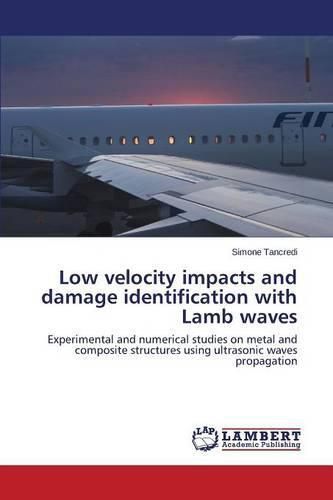Readings Newsletter
Become a Readings Member to make your shopping experience even easier.
Sign in or sign up for free!
You’re not far away from qualifying for FREE standard shipping within Australia
You’ve qualified for FREE standard shipping within Australia
The cart is loading…






This title is printed to order. This book may have been self-published. If so, we cannot guarantee the quality of the content. In the main most books will have gone through the editing process however some may not. We therefore suggest that you be aware of this before ordering this book. If in doubt check either the author or publisher’s details as we are unable to accept any returns unless they are faulty. Please contact us if you have any questions.
In this work an efficient thus computationally low cost FEM modeling technique of both low velocity impacts and Lamb waves propagation events, involving Piezoelectric Wafer Active Sensors (PWAS), is presented. In Chapter 1 both the excitation and sensing of Lamb waves are investigated. The PWAS modeling techniques gave excellent results, as clear from the comparisons with the experimental curves. The great advantage of this modeling is represented by the low computational cost. In Chapter 2 the outputs from PWAS, during low velocity impact events, are investigated. The experimental curves registered during impacts on both aluminum and composite plates were compared with the FEM ones, obtained by considering only geometrical variables of the sensors. In Chapter 3 a test case for damage detection in thin plates with Lamb waves is presented, thus proving the advantage of the PWAS modeling technique for SHM purposes. The substantial improvement of a fast FEM solution is the possibility to directly visualize and study the interaction of Lamb waves with the various kinds of defects/damage eventually present in thin structures such as holes, cracks, delaminations, debondings, etc.
$9.00 standard shipping within Australia
FREE standard shipping within Australia for orders over $100.00
Express & International shipping calculated at checkout
This title is printed to order. This book may have been self-published. If so, we cannot guarantee the quality of the content. In the main most books will have gone through the editing process however some may not. We therefore suggest that you be aware of this before ordering this book. If in doubt check either the author or publisher’s details as we are unable to accept any returns unless they are faulty. Please contact us if you have any questions.
In this work an efficient thus computationally low cost FEM modeling technique of both low velocity impacts and Lamb waves propagation events, involving Piezoelectric Wafer Active Sensors (PWAS), is presented. In Chapter 1 both the excitation and sensing of Lamb waves are investigated. The PWAS modeling techniques gave excellent results, as clear from the comparisons with the experimental curves. The great advantage of this modeling is represented by the low computational cost. In Chapter 2 the outputs from PWAS, during low velocity impact events, are investigated. The experimental curves registered during impacts on both aluminum and composite plates were compared with the FEM ones, obtained by considering only geometrical variables of the sensors. In Chapter 3 a test case for damage detection in thin plates with Lamb waves is presented, thus proving the advantage of the PWAS modeling technique for SHM purposes. The substantial improvement of a fast FEM solution is the possibility to directly visualize and study the interaction of Lamb waves with the various kinds of defects/damage eventually present in thin structures such as holes, cracks, delaminations, debondings, etc.